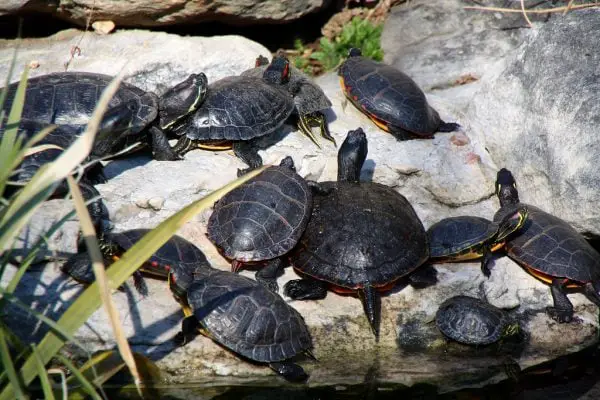Chinchillas, with their captivatingly soft fur and playful personalities, has captured the hearts of many. Beyond their adorable appearance, these fascinating creatures exhibit complex social behaviors and play a unique role in their native habitat. By delving into the diverse collective nouns used to describe groups of chinchillas, we embark on a journey beyond the fluffy exterior, exploring their social dynamics, ecological significance, and the challenges they face in a changing world.
Collective Nouns For Chinchillas
While “colony” is the most common term for a group of chinchillas, signifying a large and organized group living together, other less frequent terms paint a more nuanced picture depending on the context:
- Colony: This term evokes a sense of shared space, cooperative behavior, and interdependence. It signifies a large group of chinchillas living together in a single burrow, often with complex social structures and shared responsibilities for raising young, foraging, and maintaining their habitat. The image it creates is one of a bustling community working together for survival, highlighting their social nature and cooperative spirit.
Example: Nestled amidst the rocky crevices of the Andes Mountains, a colony of chinchillas emerged from their burrow at dusk. Their soft fur blended seamlessly with the surrounding rocks as they scurried about, foraging for food and socializing with their fellow members, showcasing their close-knit community and interconnectedness.
- Herd: While less commonly used, “herd” signifies a large and loosely organized group of chinchillas, often associated with grazing or foraging together. It evokes a sense of movement, shared purpose, and collective resource utilization. The image it creates is one of a group moving in a somewhat unified direction, highlighting their shared need for food and the dynamics within the colony in searching for resources.
Example: As the first rays of dawn painted the sky, a herd of chinchillas ventured out of their burrow in search of fresh vegetation. Their tiny noses twitched as they sniffed the air, their movements coordinated and purposeful, showcasing their collective need for sustenance and the strategies they employ to find it.
- Troop: Another less frequent term, “troop” signifies a smaller and more organized group of chinchillas, often associated with specific activities like foraging or exploring new territory. It evokes a sense of focused movement, shared responsibility, and a sense of purpose. The image it creates is one of a smaller group working together towards a specific goal, highlighting the presence of smaller sub-groups within the larger colony and their specialized roles.
Example: A small troop of chinchillas, led by a seasoned elder, ventured further down the rocky slope in search of a new source of water. Their keen eyes scanned the surroundings, their movements cautious and coordinated, showcasing the presence of smaller groups within the colony with specialized tasks and leadership dynamics.
- Fur: This whimsical term, though rarely used in formal contexts, emphasizes the dense and soft fur of chinchillas, highlighting their most recognizable physical characteristic. It can be used informally to describe a group of chinchillas huddled together for warmth or comfort.
Example: As the mountain air turned chilly, the playful fur of chinchillas huddled together for warmth. Their soft fur intertwined, creating a comforting and visually captivating spectacle, showcasing the unique characteristic that not only defines their name but also plays a vital role in their survival in harsh environments.
Interesting Facts About Chinchillas
Understanding these collective nouns goes beyond mere vocabulary; it allows us to appreciate the complexities of chinchilla behavior and their vital role in their ecosystem:
Masters of Adaptation: Chinchillas possess remarkable adaptations for survival in their high-altitude, rocky habitat. Their thick fur provides crucial insulation, their large ears enhance their hearing, and their powerful hind legs allow them to navigate the steep terrain with agility.
Social Creatures: Chinchillas exhibit complex social structures, forming close bonds within their colonies. They communicate through a variety of vocalizations and body language, and engage in playful interactions that strengthen social connections and contribute to the well-being of the group.
Ecological Significance: Chinchillas play a vital role in maintaining the health of their mountain ecosystems. They act as herbivores, consuming vegetation and aiding in seed dispersal. Their burrowing activities also contribute to soil aeration and nutrient cycling.
Final Thoughts
From the thriving “colony” to the focused “troop,” the diverse collective nouns for chinchillas offer a glimpse into their multifaceted lives and enduring presence in the Andes Mountains. By appreciating these terms, understanding their intricate behavior and ecological significance, and acknowledging the challenges they face due to habitat loss and illegal hunting, we can strive






